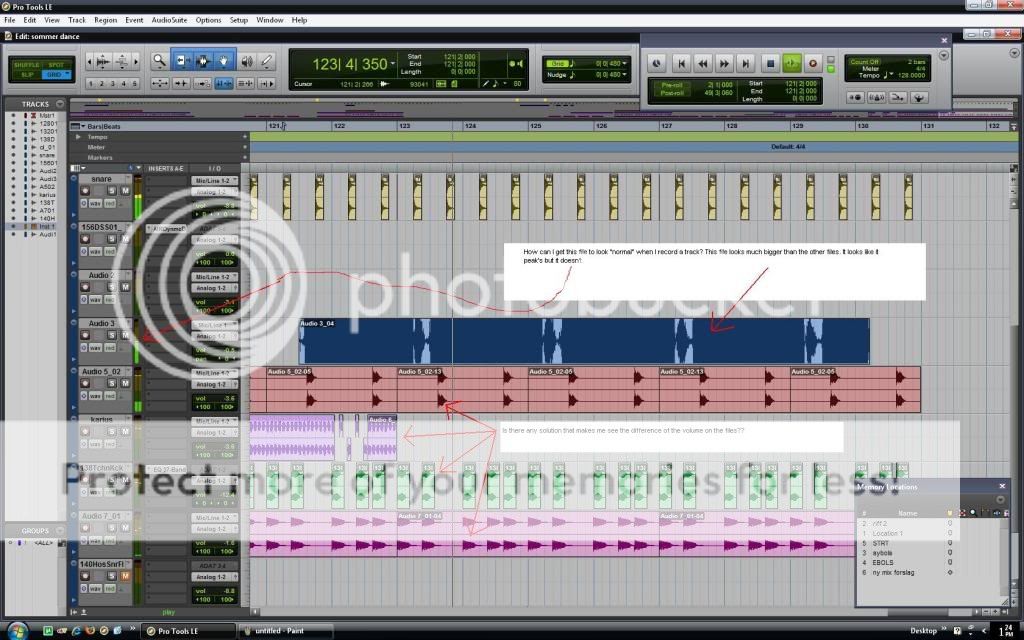I'm not an expert with PT specifically, but based upon what I've experienced in a half-dozen other editors, I'd kick off the thread with this:
As far as the display of track "Audio3", the problem is simply that the more time duration you want to fit on the screen - i.e. the more you are zoomed out in horizontal time - the more you are going to have display resolution problems. While that track may not be the brick that it appears to be in that screenshot, it does have enough peaks that approach the top of the scale to give the false appearance of a brick when you zoom out to this scale. It's the exact same reason why every one of those tracks on that pic gives you solid-looking shapes instead of a waveform made out of a 1-dimensional line.
If you want to see the volume, that's what the level meters at the left of the timelines are for. One should never really use the waveform display itself to determine specific volume; the main reason that display is there is to help the engineer find *edit locations* within the timeline, not really to accurately judge or control specific recording/tracking level. And once you've come close to the point where you wish to perform your edit, that's when you zoom in on the display to get a more accurate and detailed picture of the wave.
I'm not sure I quite understand the second question, but I'd say once again, that's what the meters are for, not the waveform display...at least not on that zoom level.
Think of it like this: If you went to Google Maps and wanted to look at NY City, if it tried to display every side street and alley on a scale of 100miles, the city would be solid black from the street lines being crowded together, even though the majority of the city is real estate and not streets. You use the larger scale maps to find your way to NYC, and then once you know how to get there, that's when you zoom in to tighter scales and Google will start displaying more detailed and accurate maps at higher map resloutions.
G.

